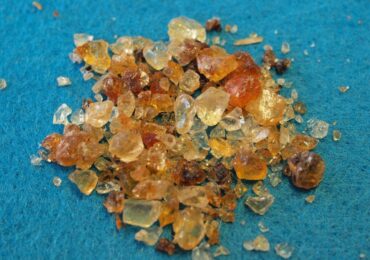Key Takeaways:
- Adhesive solutions play a crucial role in various industries, offering unique benefits in terms of efficiency and reliability.
- Technological advancements and sustainable initiatives are shaping the future of adhesive applications.
- Understanding specific use cases and industry applications enhances the effective use of adhesives.
The Role of Adhesives in Modern Industries
Although often overlooked, adhesive technology has transformed modern industry practices, becoming indispensable to various production environments. The spectrum of adhesive applications is immense, ranging from everyday consumer products to specialized industrial uses. In many areas, such as construction, automotive manufacturing, and electronics, adhesives provide critical solutions that enhance structural integrity and performance. Notably, the use of hot melt adhesive for edgebanders exemplifies how specific adhesive technologies can achieve high levels of quality and precision in finishing processes, which are vital for product durability and reliability.

The versatility of adhesives allows them to serve a dual purpose: bonding materials and acting as a sealant to protect products from environmental variables. This adaptability reduces the need for heavy and often cumbersome fasteners, which can detract from the functionality and appearance of the end product. Within manufacturing lines, the integration of adhesive technology has led to streamlined processes, allowing for faster cycle times and enhanced efficiency. The ability of adhesives to bond a wide range of materials—from metals to plastics and composites—without compromising the integrity of the materials makes them indispensable in reducing production complexities and costs.
Key Benefits of Adhesive Solutions
One advantage of using adhesives is their capability to join dissimilar materials in ways that mechanical fasteners cannot. This opens up opportunities for innovation in design and functionality, particularly in fields that require lightweight and durable materials. For example, reducing vehicle weight using adhesives instead of metal fasteners directly contributes to improved fuel efficiency, a significant benefit in the automotive industry.
Additionally, adhesives provide uniform stress distribution over bonded surfaces, which is crucial in maintaining the durability and longevity of the product. This means that products can withstand more significant operational stresses without the risk of failure. Adhesives also allow manufacturers to achieve smoother surfaces and aesthetically pleasing finishes by eliminating the need for visible mechanical joints or welds. With safer and more standardized bonding solutions, industries can focus on design aesthetics and functionality without compromising the integrity of their products.
Technological Advancements in Adhesive Formulations
The evolution of adhesive technology is driven by the need for stronger, more resilient, and environmentally responsible formulations. Industries demand adhesives that can perform under higher temperatures, resist chemicals, and deliver longevity under constant stress. Recent advancements have resulted in adhesives with enhanced molecular structures that offer these superior qualities. For example, UV-curing and anaerobic adhesives are utilized in environments requiring quick curing times and robust bond strength.
Manufacturers have prioritized the development of adhesives with minimal environmental impact, recognizing consumer and regulatory demands for greener production processes. From reducing VOCs to incorporating renewable resources in adhesive formulas, the industry is progressively shifting towards sustainable solutions without sacrificing performance.
Sustainability and Environmental Impact
As the global landscape increasingly prioritizes sustainability, many industries are pursuing sustainable adhesive technologies to meet eco-friendly standards. Transitioning to adhesives that produce fewer emissions and waste during manufacturing helps industries reduce their carbon footprint, aligning with global efforts to combat climate change. Furthermore, using biodegradable and recyclable adhesives supports a circular economy, where products are designed with end-of-life recycling in mind. Innovative developments showcase how the industry tackles environmental challenges by developing adhesives that benefit manufacturing and the planet.
Industry-Specific Adhesive Applications
- Automotive: In the automotive sector, adhesives contribute significantly to manufacturing processes by providing strong bonds that substitute traditional mechanical fasteners. This helps reduce vehicle weight, improve fuel efficiency, and reduce emissions.
- Electronics: The miniaturization of electronic devices necessitates using adhesives to secure components within tight and intricate designs. Adhesives offer structural support and electrical insulation, ensuring electronic functionality and safety.
- Construction: Adhesives contribute to structural bonding and aesthetic finishes in construction. Bond materials like glass, wood, and composites offer structure flexibility and resilience.
Guidelines for Choosing the Right Adhesive
The appropriate adhesive for a given application is essential to achieving the desired results. Several factors should be considered when choosing an adhesive:
- Substrate Compatibility: Ensure that the adhesive bonds well with the joined materials. This includes considering the substrates’ surface energy and conditions.
- Strength and Durability Requirements: The adhesive should meet the necessary mechanical strength and resistance parameters pertinent to the application.
- Environmental and Safety Considerations: Factor in elements such as temperature fluctuations, exposure to chemicals, and moisture, which could affect the performance of the adhesive.
- Product Specifications: Assess any specific application requirements and ensure the adhesive’s characteristics align with them to avoid bond failure.
The Future of Adhesive Applications
The future of adhesive technology is characterized by a push towards more innovative, more adaptive solutions that complement modern manufacturing innovations. Integrating nanotechnology and innovative materials is expected to enhance adaptability and performance in unpredictable or changing environments, further solidifying the role of adhesives in cutting-edge applications. As industries increasingly demand versatile solutions, developing and applying advanced adhesive technologies will be central to achieving breakthroughs in production methodologies and product functionalities.
Ultimately, adhesives will continue to be a driving force in overcoming industry constraints and opening up new possibilities. The trajectory of adhesive technology signifies a promising horizon where efficiencies in production and reductions in lifecycle impacts are within reach, paving the way for sustainable and robust innovations across industries.
Conclusion: Embracing Change in Adhesive Applications
As industries embrace adhesive technologies’ transformative potential, they recognize their crucial role in meeting modern production and sustainability challenges. Advancements in adhesive applications promote enhanced operational efficiency, functionality, and environmental stewardship, aligning with global sustainability goals. By integrating the latest adhesive technologies into their processes, companies are poised to foster innovation, reduce costs, and meet the evolving needs of their markets, shaping a promising future for the manufacturing and production landscape at large.